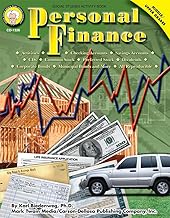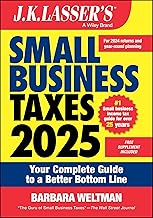Summary of "The 20 Rules of Money"
Summary of Finance-Specific Content from The 20 Rules of Money
Key Concepts and Frameworks
Money as a Game (Rule #1)
Money management and wealth-building is a learnable game, much like chess or Monopoly. Success comes from learning the rules and practicing consistently.
The Doubles Game (Rule #3)
Wealth growth is about doubling your money multiple times.
- Example: Starting with $1,000, 10 doubles = approximately $1 million.
- Key factors:
- Know your risk tolerance (which varies by age, e.g., 22 vs. 65 years old).
- Define your time horizon (e.g., 10 years to reach $1 million).
- Focus on how quickly you can double your money rather than just accumulating.
Risk Management and Timing (Rules #5 & #10)
- Timing decisions are critical: when to invest, when to cut expenses, when to stay liquid.
- Avoid panic during market downturns (“end of the world mentality”).
- Market crises present buying opportunities; having cash ready during downturns is essential.
- Example: During the 2008 market crash, those who stayed invested or bought during the dip benefited greatly as markets recovered.
Cash and Crisis Accounts (Rule #7)
Maintain a secret crisis account (separate from an emergency fund) that only you know about. This cash reserve can save a business or personal finances during tough times.
Compensation Plan and Taxes (Rule #9)
Understand your tax structure as it is effectively your compensation plan.
- U.S. tax incentives favor business owners because they create jobs.
- Recommendation: Become an entrepreneur or business owner to benefit from these incentives.
Investment Philosophy and Indexing (Rules #12 & #14)
- Study smart investors like Warren Buffett to understand their mindset and strategies, but don’t follow blindly.
- Focus on beating your personal financial goals rather than just beating market indexes.
Networking and Partnerships (Rules #15 & #19)
- Surround yourself with knowledgeable money-makers to improve your own financial success.
- Develop strategic partnerships with large companies (e.g., $400B, $200B firms) to increase business value and income streams.
Diversification and Leverage (Rules #16 & #17)
- Diversification suits low risk tolerance individuals (“sissies”), especially older investors near or at their goals.
- For aggressive wealth building, diversification slows growth; focus on higher risk/higher reward strategies.
- Leverage is key—not just debt, but leveraging business resources, marketing, and partnerships to accelerate growth.
Positioning (Rule #18)
Position yourself to own equity or stakes in companies with growth potential (e.g., startups going public).
- Positioning is as important as income and savings for wealth creation.
Big Check Syndrome (Rule #20)
- Avoid treating large, irregular income as monthly income. Instead, view it as spread over time (e.g., a $100K check = $8,300/month for a year).
- This mindset prevents reckless spending and protects net worth growth.
Frugality in Lifestyle (Rule #8)
- Avoid unnecessary expenses like flying first class until you have $10 million in assets.
- Redirect such savings toward business growth or hiring talent.
Explicit Recommendations and Cautions
- Always know your risk tolerance and time horizon before investing or doubling money.
- Keep money moving to avoid “boredom”—idle cash loses opportunity cost.
- Maintain a secret crisis fund unknown to others for emergencies.
- Study tax laws and political environments to optimize your compensation plan and adjust strategies accordingly.
- Don’t blindly follow market indexes; set and beat your own financial goals.
- Choose business partners carefully; vet their character and financial acumen.
- Avoid over-diversification if you want aggressive growth; it may slow your progress.
- Use leverage wisely to accelerate business growth and investment returns.
- Position yourself in equity opportunities to multiply wealth beyond salary and savings.
- Resist lifestyle inflation from one-off big paychecks; plan income streams sustainably.
- Avoid lifestyle expenses like first-class travel until significant wealth is built.
Assets, Instruments, and Sectors Mentioned
- No specific stock tickers or ETFs mentioned.
- General references to:
- Real estate (example of selling a $3 million home).
- Equity ownership in companies (startups, public companies).
- Large corporate partnerships ($400B, $200B, $60B companies).
- Market indexes (general reference).
- Cash reserves and crisis funds (liquid assets).
- No direct mention of bonds, crypto, or commodities.
- Reference to Warren Buffett’s silver purchase (no ticker given).
Methodology / Step-by-Step Frameworks
Doubles Game Framework
- Determine your current capital.
- Define your target wealth goal.
- Calculate how many doubles are needed to reach the goal.
- Assess your risk tolerance and time horizon.
- Develop investment strategies to achieve doubling within your timeline.
Big Check Income Management
- Treat large irregular income as spread over months or years.
- Avoid lifestyle inflation from lump sums.
- Use steady income streams to build sustainable wealth.
Strategic Partner Vetting
- Know the person’s character and financial discipline.
- Observe their personal and professional life (family, behavior).
- Engage gradually (e.g., dinners, travel) before business commitment.
- Hire slowly, fire quickly.
Disclaimers / Disclosures
This is not direct financial advice but guidance based on the presenter’s personal experience and observations. The presenter emphasizes learning the “money game” and adapting to personal circumstances. The video encourages viewers to study, plan, and adjust strategies rather than blindly follow others.
Presenter / Source
- Patrick Bet-David, entrepreneur and host of Valuetainment.
- Mention of Tom (company president) as an example in positioning.
- Reference to Warren Buffett as an influential investor to study.
Additional Notes
- The video offers a free PDF of the 20 rules at PatrickBetDavid.com for further study.
- Emphasis on entrepreneurship as a pathway to wealth due to tax incentives and compensation plan benefits.
- Encouragement to avoid panic selling during market downturns and to prepare for cyclical market crashes over long-term horizons.
This summary captures the finance-specific teachings and actionable insights from the video The 20 Rules of Money.
Category
Finance
Share this summary
Featured Products




